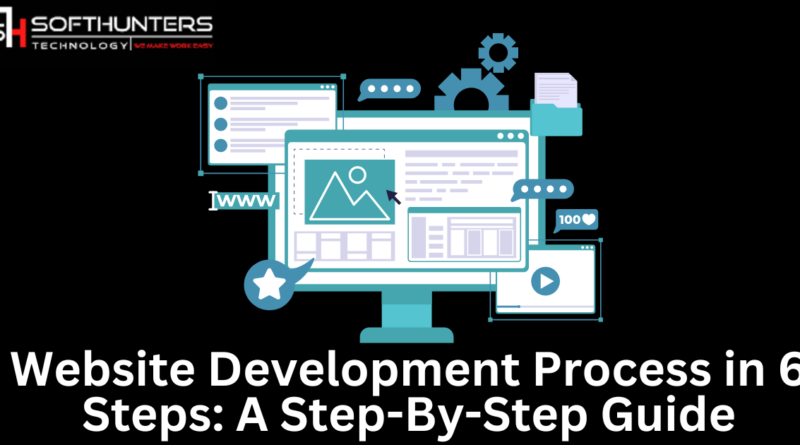Website Development Process in 6 Steps: A Step-By-Step Guide
Website development projects come in all dimensions, but the process remains the same. Regardless of whether you are constructing a small, updated brochure website or a large brand with a massive number of products when you follow a predictable process, you ensure you are structuring a website that’s both search and user-friendly. In this context, useful knowledge translates as a website development process in 6 steps, a step-by-step guide. The team at the best e-commerce website development company in Jaipur, after all, also needs to keep ahead of essential deliverables and assets to build your new website.
Defining a website development process
A website development process is a documented, predictable set of steps to successfully finish a web application or website development project. The project helps align development resources, team members, and stakeholders to make sure all project aspects are dealt with and delivered on time.
Web development vs web design
When you get down to building a website, you have two main steps to reckon with – website development and website design. However, it may also lead to website programming, database management, and website publishing.
Web development refers to a website’s functionality. Conversely, web design lays out a website’s look. You need both when you have to build a website. Looks and functionality both have to be simultaneous and in sync.
Website development types
We will mention that there are two types of website development broadly, and these are front-end development and back-end development. Simply put, this refers to what a user sees – and does not see – on the website.
Front-end development
Back-end development website’s customer-facing side
Concentrated on visual elements
Content, graphics, navigation, layouts.
Back-end development
Website’s server side
Functionality focused
Data, debugging, building code.
To repeat, website development is a broad process concerned with diverse parts and modules of development. It is important to have diverse functions working in tandem towards a common goal, with a streamlined web development workflow process for the best outcome.
Step #1: Information gathering
You have to have information before you can actually build a website. This will include your target audience, main goals, and your purpose. Your purpose is the main reason behind the website’s creation. Do you undertake this for self-promotion, or to furnish info about a particular topic? Your goals are what you mean to achieve with your website.
With a set of goals, you will have a better idea of how to go about website creation and the type of content to include. Your target audience is whom your website is going to attract. Every business has a target audience, so do ensure you work out who yours is prior to the actual website creation. You can think up in your head images with descriptions of the prospective ideal customer, with age, gender, and interests.
Step #2: Planning
You have to start planning on the basis of the info gathered. With the info from the first step, you will have to create a sitemap. The latter is a list of your website’s topics and sub-topics. The sitemap aids you in the visualization of the website so that you can picture in your head how the user will move from webpage to webpage. For building navigation, this is the right step as far as pointers go.
Step#3: Design
Following your planning of the website’s outline, you have to work out how it will appear. You will be considering all visual content, like videos and photos. Ascertain you have the target audience in mind whilst site design planning.
For instance, a public relations brand will have a type of website that’s very distinct relative to a brand with a target audience of pet owners. You would like your website to cater to your target audience’s needs and wants.
Step#4: Content
Your website’s content quality is an important determinant. The content will carry your message to your audience, persuading them to use your website. Prior to your writing your content, you have to consider the nature of your goal and purpose. Your content has to be relevant and sufficiently interesting so that users keep coming back.
Step#5 : Functionality
Now you start building your website. This is also when the above steps will converge to create the website’s functionality and look. Your website has to be easy to get around, and user-friendly. The homepage will generally be created first, subsequently followed by all sub-pages. You will have to make sure the website will be easy to access from mobile and desktop both.
Step#6: Testing
Following successful creation, the website is still not launch-ready yet. It has to be tested first. Website testing tends to be tedious. Nonetheless, you have to take steps to see the thing is operating normally. You will be testing all the links and buttons on the website, checking every spelling, and ascertaining the website looks the same on both mobile and desktop.
Conclusion
Launching will involve uploading the website onto a server, with one last test to see if there are no glitches. The website’s running smoothly. However, do not get over-complacent and be on top of any issues that might arise. Monitoring and updating the website is also a part of its existence on the digital plane. The best e-commerce website development company in Jaipur will help you make the most of all the technologies and techniques that go into building up a website.

